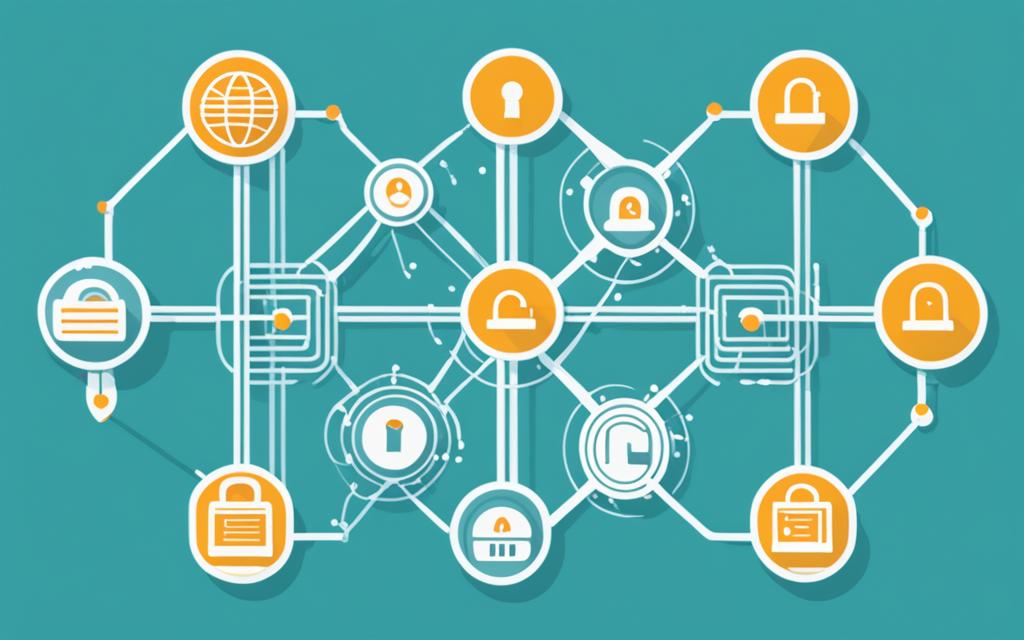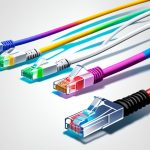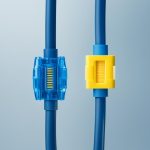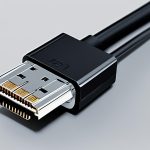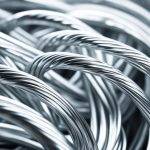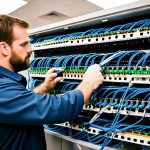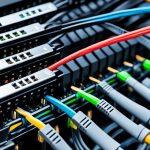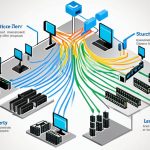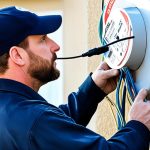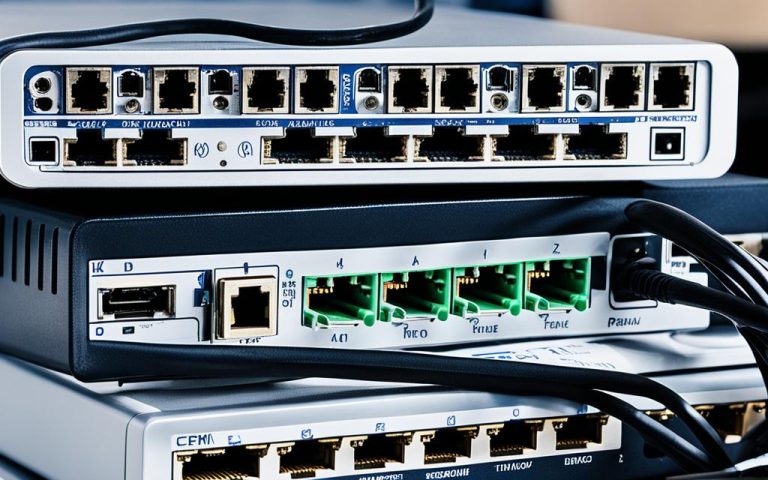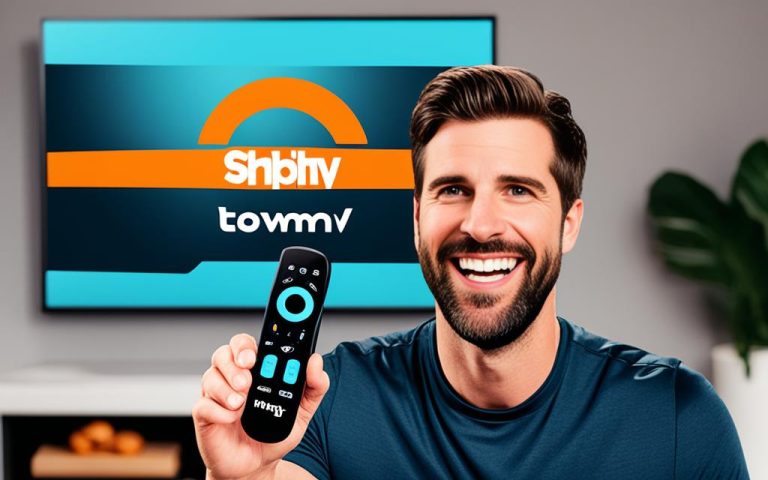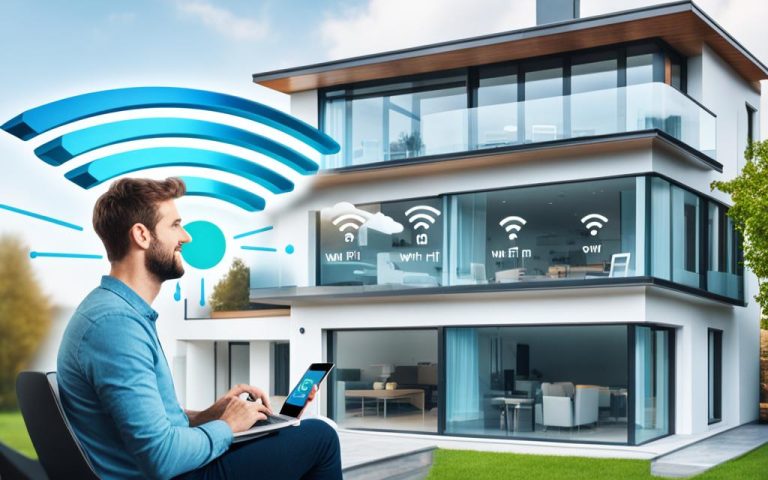A media converter is a key device in today’s networks. It changes communication protocols from one cable type to another. This makes sure different network cables can connect smoothly. It’s often used to switch Ethernet or other protocols from copper to fiber. This lets data travel longer distances and send data faster.
Media converters are vital for extending LAN distances. Ethernet over copper can only go 100 meters with UTP cable1. But, with fiber, media converters can stretch this up to 80 km or more1. This helps connect far-off places, data centers, and telecom networks, getting past copper’s limits.
Media converters also protect data from interference. Fiber links send data faster and are less affected by electrical noise than copper cables2. Using media converters to switch from copper to fiber makes sure LAN connections are safe and reliable. This is important in places like offices, governments, data centers, and telecom networks2.
They also make it easy to change link speeds. Media converters can switch speeds from 10 Mbps to 1000 Mbps. This means devices with different speeds can work together without problems1. It makes it easier for companies to use a variety of devices in their networks.
Media converters also support Power over Ethernet (PoE). PoE makes setting up devices like IP cameras and Wi-Fi access points easier by removing the need for extra power cables1. PoE media converters send both power and data on one Ethernet cable. This makes networks more reliable and efficient, especially in business settings1.
Key Takeaways:
- Media converters help extend LAN distances and keep data safe from interference12.
- They change link speeds from 10 Mbps to 1000 Mbps, making it easy to add devices to networks1.
- Media converters support Power over Ethernet, making it easier to set up devices1.
- They come in different forms, like standalone or chassis-based, managed or unmanaged, for business or industrial use1.
Extending LAN Distance and Protecting Data
Networking needs focus on extending LAN distance and protecting data. Media converters are key in this area. They change Ethernet signals to fiber signals, letting LAN links go beyond the usual 100-meter limit of copper Ethernet3.
Copper Ethernet has a 100-meter limit, but media converters can fix this3. These devices turn electrical signals into light waves. This lets LANs stretch up to 80 kilometers or more with Ethernet to fiber conversion3. This long reach is great for network coverage and connectivity.
Media converters also protect data by moving networks to fiber while keeping old copper hardware3. Fiber cables send data without interference from electromagnetic waves, ensuring networks work well and reliably3.
Media converters are great because they can change link speeds from 10 Mbps to 1000 Mbps3. This makes adding different network devices easy and solves compatibility problems3. They also make setting up Wi-Fi points, IP cameras, and other devices easier by using PoE (Power over Ethernet)3.
Industrial-grade media converters work well in tough conditions, from -40°F to 167°F3. They’re perfect for industries like building automation, oil and gas, and mining, keeping networks up and running.
Media converters can make fiber links up to 80 kilometers long, offering a secure way to connect over long distances3. PoE media converters help backhaul Wi-Fi data and power access points, making networks better and more reliable3. PoE+ converters also make installing IP security cameras easy by removing the need for a power line near the camera3.
In summary, media converters have many benefits like extending LAN distance, protecting data, and offering network flexibility3. They make moving to fiber-optic networks easy, boost network performance, and make setting up devices simpler3. They work well in extreme temperatures, making them good for both industrial and business use3.
Migrating to Fiber and Link Speed Conversion
Businesses often need to switch from old copper networks to fiber optic ones. This move lets them use fiber’s many benefits while keeping their copper gear. A key tool for this switch is a media converter.
Media converters are key in making the switch to fiber. They connect Ethernet networks with fiber cables. This lets businesses extend their networks past the 100-meter limit of copper cabling4. They’re perfect for long-distance connections or places where copper can’t handle the environment4.
Media converters also help change network speeds as needed. They support speeds from 10 Mbps to 1000 Mbps, making them great for data-heavy tasks4. This means businesses can upgrade their networks without fully changing their setup4.
Switching to fiber and using media converters has big benefits for businesses. Fiber sends data faster and farther than copper, making networks faster and more reliable45. Media converters make sure fiber and Ethernet cables work together smoothly5. They also change network speeds and protocols, like from Fast Ethernet to Gigabit Ethernet5.
When picking media converters, cost is a big factor. Managed converters have extra features for complex networks but cost more than unmanaged ones4. Businesses need to think about what they need and their budget when choosing. Media converters help mix old and new tech by connecting different cables4.
In summary, media converters are vital for moving to fiber and changing network speeds. They help businesses go beyond copper’s limits, adapt to speed needs, and keep different cables working together. With the need for fast and reliable networks growing, media converters are key in today’s fiber Ethernet networks5. Using fiber migration and speed changes, businesses can prepare for the future and grow.
Power over Ethernet (PoE) Capabilities
Media converters with Power over Ethernet (PoE) make installing devices like Wi-Fi access points and IP cameras easier. They don’t need a separate AC power circuit6. PoE can power devices over copper UTP cabling, making installation cheaper and simpler.
PoE media converters can extend the reach of fiber optic cabling, connecting to devices like VoIP phones and security cameras6. The longest distance they can extend is 140 kilometers. However, this can change based on the fiber type and other factors6.
Commercial PoE media converters work well in offices, between 0° to 50ºC6. Industrial ones can handle extreme temperatures, perfect for tough environments like factories and transportation6.
PoE is great because it can power devices using standard UTP cables that carry Ethernet data6. This means no extra power cables are needed, making setup easier and managing power better for network devices.
Omnitron Systems, the maker of PoE media converters, offers a lifetime warranty on their products6. This gives customers confidence in the quality and reliability of their purchases.
The Power of PoE
PoE technology has different power options and standards for various devices. The IEEE 802.3af-2003 standard gives up to 15.4 W of power per port7. The IEEE 802.3at-2009 standard, or PoE+, can give up to 30 W to devices7.
For devices needing more power, IEEE 802.3bt allows up to 60 W to 100 W over four wires7. This includes Type 3, or PoE++, which gives 60 W per port7. Type 4, or high-power PoE, can offer up to 100 W to devices7.
There are different types of PoE for various devices and their power needs. PoE Type 1 is for devices like PTZ cameras and video IP phones, giving up to 15.4 W per port7. PoE Type 2 can give up to 30 W per port for devices needing more power7.
Expanding Network Connections and Beyond
PoE media converters are key in connecting different networks and expanding connections8. They support data rates like 10/100mbps and 10/100/1000mbps, fitting many network setups8.
The type of PoE media converter, like single mode or multimode, affects compatibility with switches8. Port types for fiber optic connections, such as ST and SC, offer flexibility in connecting cables8.
PoE media converters can send data and power up to 100 meters, making it easy to place devices in various spots8. They’re great for industrial and high-density setups, where Fast Ethernet standards are important8.
PoE media converters make installing devices easier, extend power reach, and help expand networks. They’re a reliable way to add PoE devices to networks, improving scalability, flexibility, and power management.
Types of Media Converters
There are many media converters for networking solutions. They help connect different types of equipment. Knowing about these converters helps businesses choose the right ones for their networks. Let’s look at some key types:
- Copper-to-Fiber Converters: These let copper Ethernet equipment work over fiber optic links. They help extend distances and protect data9. They’re great when copper cables don’t reach far enough9.
- Fiber-to-Fiber Converters: These converters connect different fiber networks and change wavelengths9. They’re useful for sending data smoothly across various fibers9.
- PoE Media Converters: PoE media converters extend fiber distance and power devices, making setup easier in places without AC power9. They’re often used for security cameras, IP phones, and wireless access points9.
Each media converter type has its own role in networking. They help extend connections, change signals, or deliver power. Media converters offer flexible solutions for many needs.
Choosing the right media converter depends on your networking needs, distance, and signal type. It’s key to look at each converter’s pros and cons, compatibility, speed, and network size10. Knowing what industries prefer and market trends helps in making choices10.”
Applications and Market Trends
Media converters come in many types for different industries. Here’s a closer look at their uses and market impact:
- Standard Media Converters: Great for start-ups and small businesses needing basic networks. They’re easy to use and simple9.
- PoE Media Converters: Often used in security cameras, IP phones, and wireless access points. This shows the growing need for power over Ethernet9.
- Enterprise Media Converters: Used in big company networks for business needs9.
- Hardened Media Converters: Made for outdoor use in tough conditions9.
- Carrier Ethernet Media Converters: Designed for WAN connections, mainly used by telecom providers or big organizations9.
- Mini Media Converters: Ideal for saving space in networking setups9.
Market trends show what converters are preferred for certain tasks:
- Single-Mode Media Converters: Best for high-speed data over long distances. They’re great for applications needing low signal loss9.
- Multi-Mode Media Converters: Perfect for short LANs, like streaming videos or internal networks9.
- Copper to Fiber Conversion: This feature extends networks past copper cable limits9. It helps connect different cable types smoothly.
- Copper to Copper Media Converters: Reuses old cables, promoting a green approach to networking9.
- Fiber to Fiber Media Converters: Connects single-mode to multimode fibers, ensuring data flows well across different fibers9.
- Gigabit Ethernet: Supports fast data transfer in business networks9.
Note: The table above gives a quick overview of media converter types and their uses. It’s crucial to think about your specific networking needs and get advice from experts to pick the best converters.
Standalone vs. Chassis-Based and Managed vs. Unmanaged Media Converters
Choosing a media converter involves looking at its type, manageability, and your network’s needs. You should think about standalone vs. chassis-based converters and managed vs. unmanaged ones.
Standalone vs. Chassis-Based Converters
Standalone media converters are compact and easy to use. They’re great for converting single copper links to fiber in tight spaces. They’re perfect for small offices, classrooms, or remote spots where space is a concern.
Chassis-based media converters are better for big setups like data centers. They let you add many converter modules in a rack, making it easy to switch many copper ports to fiber. This saves space and is cost-effective for big networks.
For more info on standalone media converters, check out this detailed description. Or learn about chassis-based converters here.
Managed vs. Unmanaged Converters
Managed media converters give network admins more control and monitoring tools. They’re great for big networks where reliability and security matter a lot. They help admins keep the network running smoothly and fix problems fast.
Unmanaged media converters are easy to set up and use. They’re good for small networks or simple setups where you don’t need many features. They’re perfect for keeping things simple and easy.
Learn more about managed media converters here.
Choosing between standalone and chassis-based converters depends on your network’s size and space needs. Picking managed or unmanaged converters depends on how much control you want over your network. Think about these factors to pick the right media converter for your network.
Comparison Table: Standalone vs. Chassis-Based and Managed vs. Unmanaged Media Converters
| Feature | Standalone Converters | Chassis-Based Converters | Managed Converters | Unmanaged Converters |
|---|---|---|---|---|
| Usage | Point-to-point installations, compact environments | High-density spaces like data centers | Enterprise networks, large data centers | Simple networks, small offices |
| Scalability | Limited scalability | Modular, scalable solution | Flexible network control | Straightforward plug-and-play |
| Management | Not applicable | Not applicable | Advanced network control and monitoring | Basic functionality, limited management |
| Deployment | Restricted space environments | Data centers, network equipment rooms | Enterprise networks, large data centers | Simple networks, small offices |
| Cost | Cost-effective | Cost-effective for large-scale conversions | Higher investment for advanced features | Cost-effective |
Reference: Statistics provided by1112,, and13
Commercial vs. Industrial Media Converters
There are two main types of media converters: commercial and industrial. It’s important to know the differences to pick the right one for your network needs.
Commercial Media Converters
Commercial media converters are perfect for offices and data centers. They work well and are affordable for extending networks and improving connectivity. They can work in temperatures from -10˚C to 55˚C14.
There are single-mode and multimode options for commercial use. Single-mode converters can send signals up to 40KM. Multimode converters work over 300m to 500m14.
Commercial converters come in different sizes for various installations. Standalone converters fit in tight spots, like cabinets. Chassis-based ones are great for data centers. Slide-in cards make maintenance easy14.
Commercial converters can be PoE or non-PoE. PoE ones send power over Ethernet. Non-PoE ones don’t need DC power for devices14.
Industrial Media Converters
Industrial converters are made for tough environments. They handle extreme temperatures and harsh conditions. They work from -40˚C to 85˚C11.
Industrial converters are perfect for industrial settings. They’re reliable in extreme temperatures. They’re used in automation, oil and gas, and mining11.
Industrial converters come as managed or unmanaged types. Managed ones have remote management and fault detection. Unmanaged ones are easy to set up and good for small uses11.
Industrial converters are tough and durable. For example, the RUGGEDCOM-RMC41 is made for industrial use. It’s reliable and performs well in tough conditions15.
Table 7.1: Comparison of Commercial and Industrial Media Converters
| Features | Commercial Media Converters | Industrial Media Converters |
|---|---|---|
| Operating Temperatures | -10˚C to 55˚C14 | -40˚C to 85˚C11 |
| Optical Module | Single-mode and multimode options available14 | Designed for industrial fiber applications11 |
| Form Factor | Standalone, chassis-based, slide-in solutions14 | Designed for rugged environments11 |
| Power Options | PoE and non-PoE versions available14 | Varying power options based on industrial requirements11 |
| Management Options | N/A | Managed and unmanaged variants available11 |
Choosing between commercial and industrial converters depends on your network’s needs. Commercial ones are great for offices and are cost-effective. Industrial ones are tough for extreme conditions1411.
Benefits and Applications of Media Converters
Media converters are key in networking, offering many benefits. They link fiber and copper networks smoothly, making tasks faster16. This boosts network speed and efficiency. They also help expand networks beyond their limits, making it easier to grow16. This means businesses can expand without spending a lot on new infrastructure17.
Media converters reduce electromagnetic interference when moving between fiber and copper. This ensures data is sent reliably and without interruptions16. They also provide steady power, making them great for powering devices in various settings.
Applications of Media Converters
Media converters have many uses across different industries. In business networks, they’re vital for Wi-Fi data backhaul, ensuring fast and smooth connections18. They’re also used in security systems, helping integrate IP cameras and send data reliably18.
Government and defense networks use media converters for secure communication across different technologies. They make switching between technologies easy without a full network rebuild17. They also help connect remote areas without the high cost of new infrastructure17.
Adding media converters to a network brings many advantages. It speeds up data transfer, cuts down on delays, and improves network speed17. They save money by making old infrastructure last longer and reducing upgrade costs17. Their easy setup means less hassle and simpler network management17.
In conclusion, media converters offer a lot for networking. They speed up networks, make communication smooth, and are key in many industries. Their ability to reach farther, protect existing setups, and make setup easy makes them vital for businesses looking for reliable and affordable networking solutions.
Conclusion
Media converters are key in networking, connecting different technologies and boosting connectivity in fields like telecom, data centers, and industry19. They make sure different media types work together, stretch network reach, and make networks more reliable and flexible19. By picking the right media converter, companies can meet their networking needs well, looking at things like compatibility, distance, power, scalability, and flexibility19.
Media converters also have many uses, like connecting distant devices or networks, extending network reach, and making sure different network parts work together19. They can handle fiber distances from 220 meters to 160 kilometers, depending on the cable, converter, wavelength, and data rate20.
Also, media converters help extend Power over Ethernet (PoE) up to 100 meters and support many network protocols20. Industrial media converters can work in tough conditions, from -40 °C to 85 °C20. They also boost security by using fiber optic cables that resist electromagnetic interference21.
In short, media converters are reliable and cost-effective ways to boost network performance and keep connections strong in both business and industrial settings. They help extend network reach, improve reliability, and offer flexibility, making them vital for modern networks19. By choosing the right media converter, companies can make their networks future-ready and ensure they work well and reliably21.
FAQ
What is a media converter in networking?
A media converter changes communication protocols from one cable type to another. It’s used to switch Ethernet or other protocols from copper to fiber.
What are the benefits of using a media converter?
Media converters offer many advantages. They let networks go further, keep old equipment working, boost bandwidth, and ensure reliable power.
What are the different types of media converters available?
There are many types of media converters. You can find copper-to-fiber, fiber-to-fiber, and PoE media converters.
How do media converters help in extending LAN distances?
Media converters turn Ethernet into fiber. This lets networks stretch up to 80 kilometers or more. It goes beyond the 100-meter limit of copper cables.
What is the role of media converters in migrating to fiber?
Media converters help move networks to fiber without losing money on old copper gear. They also change link speeds, making networks more flexible and scalable.
How do PoE media converters simplify installations?
PoE media converters power devices like Wi-Fi access points and IP cameras over copper cables. This cuts down on installation work and costs.
What is the difference between standalone and chassis-based media converters?
Standalone media converters are small and convert one copper link to fiber. Chassis-based converters are for places needing many conversions at once.
What is the difference between managed and unmanaged media converters?
Managed media converters let network admins control data, bandwidth, and traffic. Unmanaged ones don’t offer this control.
What is the difference between commercial and industrial media converters?
Commercial media converters are for typical office and data center use. Industrial ones are made for tough conditions, like extreme temperatures and rough environments.
In what applications are media converters commonly used?
Media converters are used in many areas. They’re in enterprise networks for Wi-Fi data backhaul, in commercial security for IP cameras, and in government and defense for secure and reliable networks.
Source Links
- https://www.blackbox.be/en-be/page/45973/Resources/Technical-Resources/Black-Box-Explains/lan/What-is-a-Media-Converter – 8084 – What is a Media Converter?
- https://www.omnitron-systems.com/education/media-converter-learning-center – Media Converter Overview
- http://www.blackbox.com/en-in/insights/blackbox-explains/inner/detail/networking/connectivity/what-is-a-media-converter – What is a Media Converter?
- https://www.omnitron-systems.com/blog/what-is-an-ethernet-media-converter – What is an Ethernet Media Converter?
- https://www.genuinemodules.com/what-is-the-use-of-media-converter-in-fiber-ethernet_a3781 – What is the use of media converter in fiber ethernet?
- https://www.omnitron-systems.com/blog/what-is-a-power-over-ethernet-poe-media-converter – What is a Power over Ethernet (PoE) Media Converter?
- https://www.black-box.eu/en-int/page/23888/Resources/technical/Black-Box-Explains/lan/poe-power-over-ethernet – 3398 – Power over Ethernet (PoE) Explained: PoE Standards, Types and Power Levels
- https://www.e1-converter.com/TechnicalLectures/What_is_PoE_Media_Converter.html – What is PoE Media Converter?
- https://www.versitron.com/blogs/post/various-types-of-media-converters-its-protocols – Know About Types of Media Converters & Media Converter Protocols, Forms, Modes | Versitron
- https://fiberroad.com/resources/tech-notes/types-of-fiber-media-converters/ – Discover the Different Types of Fiber Media Converters
- https://www.gbic-shop.de/a-description-of-media-converter-and-why-should-choose-it – A Description of Media Converter and Why should Choose it
- https://www.perle.com/products/media-converter-19-slot-chassis.shtml – Media Converter Chassis | Media Converter Rack
- https://blog.aeconnect.co.in/media-converters/ – Media Converters: Extend Your Fiber & Copper Network
- https://store.qsfptek.com/blogs/article/the-complete-guide-to-media-converters-how-to-choose-a-media-converter – The Complete Guide to Media Converters, How To Choose A Media Converter?
- https://ipc2u.com/articles/knowledge-base/understanding-media-converters-a-comprehensive-overview/ – Understanding Media Converters: A Comprehensive Overview
- https://www.fiberplusinc.com/blog/benefits-media-converters-2/ – The Benefits of Media Converters | FiberPlus Inc
- https://sfpstore.co.uk/blogs/knowledge-centre/what-are-the-benefits-of-using-media-converters – What are the benefits of using media converters?
- https://community.spiceworks.com/t/fiber-sfp-vs-fiber-media-converters/532637 – Fiber SFP vs. Fiber Media Converters?
- https://www.genuinemodules.com/what-is-media-converter-in-networking_a1419 – What is media converter in networking?
- https://www.omnitron-systems.com/blog/what-is-a-media-converter – What is a Media Converter?
- https://www.vcelink.com/blogs/focus/what-is-media-converter – An In-depth Guide to Media Converter

